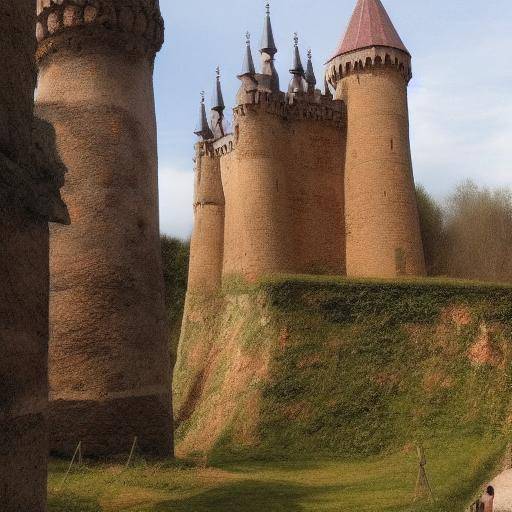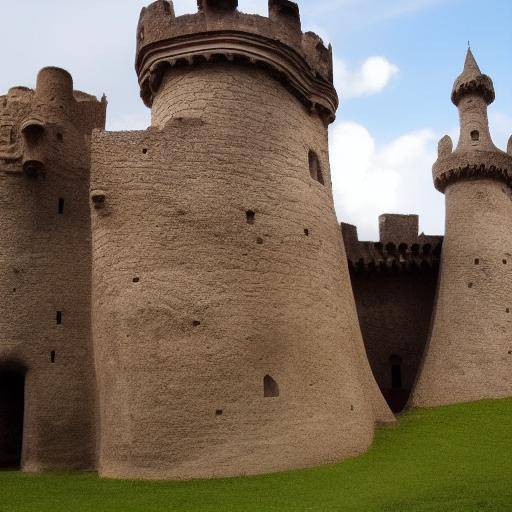
Introduction
Welcome to a journey through the mysterious lands of Transylvania, where the figure of the legendary Dracula has captured the imagination of generations. In this article, we will explore the rich history of Transylvania, the myths and legends that surround the infamous Vlad III, better known as Dracula, and its influence in the Romanian Gothic literature. From the haunted castles to the literary works that have lasted in time, we will discover the fascinating legacy of this enigmatic corner of the world.
History and Background
Transylvania, a mountainous region located in the heart of Romania, has been the scene of a tumultuous history dating back centuries. From the migrations of ancient peoples and Roman influence, to Turkish domination and the subsequent unification with Romania in the twentieth century, the region has witnessed countless events that have left an imprint on its cultural landscape.
One of the most enigmatic characters associated with Transylvania is Vlad III, Prince of Valaquia, whose sinister reputation has been intertwined with the legend of Dracula. Known for his fierce resistance against the Ottoman invaders, Vlad III won notoriety for his cruel methods, which earned him the nickname of "Dracula", which means "son of the devil". Although the historical figure and legend are intertwined, their legacy has endured over the centuries, influencing Gothic literature and feeding countless myths and superstitions.
Deep analysis
The figure of Dracula has been explored from various perspectives, from the fascination of his character to the influence in Gothic literature. Authors like Bram Stoker brought this fascination to new heights, creating the iconic novel that immortalized the legend of Dracula and placed it at the center of the world Gothic imaginary. The novel not only solidified the association between Dracula and Transylvania, but also inspired a plethora of adaptations and reinterpretations over the years.
However, the influence of Dracula goes beyond literature. It has permeated popular culture, generating a rich legacy of films, series, and works of art that have contributed to keeping alive the fascination of the Transylvania region and the legends of Dracula. This amalgam of myths, legends and literature has created a vast imaginary that continues to captivate audiences around the world.
Comprehensive review
The legacy of Dracula and the Romanian Gothic literature have transcended time, finding their place in contemporary culture. Tourism around the castles associated with Dracula has flourished, attracting avid travelers to explore the history behind the legend. In turn, the Romanian Gothic literature has experienced rebirth, attracting readers in search of the darkness and intrigue that characterize this genre.
On the other hand, the representation of Dracula and the Gothic elements in the current pop culture has led to a wide range of products, from merchandising to thematic events. This intersection between tradition and modernity has generated a fertile ground for the exploration of new narratives and reinterpretations, keeping alive the legacy of Dracula and the Romanian Gothic literature in the 21st century.
Comparative analysis
By comparing the figure of Dracula, the region of Transylvania and the Romanian Gothic literature, it is evident that there is a unique synergy that has transcended time. The mutual influence among these elements has led to a complex narrative that continues to captivate audiences from around the world. The combination of myths, legends and literature has forged a cultural framework that resonates in different artistic and tourist expressions.
Practical Tips and Accessible Recommendations
If you plan to dive into the fascinating route of Dracula castles in Transylvania, here are some practical tips:
- Research the history and mythology of the region to enrich your experience.
- Plan your itinerary in advance to visit the castles and relevant sites.
- Consider participating in specialized tours that deepen the figure of Dracula and Gothic literature.
- Take the opportunity to explore the rich culture and gastronomy of Romania during your visit.
Industry Perspectives and Expert Reviews
Experts in history, literature and folklore have contributed significantly to the understanding and appreciation of the legacy of Dracula and the Romanian Gothic literature. Their perspectives shed light on the lasting influence of these issues in contemporary culture and their role in the preservation of ancestral traditions.
"The figure of Dracula exerts a singular magnetism on the collective unconscious, generating a constant dialogue between history, literature and popular imagination," says historian and expert in folklore, Elena Popescu. "The ability of these narratives to evoke such profound emotions is testimony to their lasting relevance in our society."
Case Studies and Real Life Applications
From thematic festivals to contemporary adaptations of Dracula's history, case studies show how the legacy of Transylvania and the Count's myth continue to inspire new artistic and cultural manifestations. These examples illustrate the diversity and wealth of interpretations around Dracula and Gothic literature, showing their ability to transcend generations and cultural borders.
Future Trends and Predictions
The legacy of Dracula and the Romanian Gothic literature seem to have a promising future, with a growing demand from avid audiences to explore the dark and mysterious universe they enclose. It is expected that the influence of these themes will persist in popular culture, keeping the interest in Transylvania and its connection with the most famous vampire figure in the world.
In the field of tourism, there is an increase in the exploration of destinations linked to the figure of Dracula, which will lead to greater diffusion and understanding of the history and culture of Romania. In the artistic sphere, new interpretations and works inspired by the figure of Dracula and Gothic literature are expected, enriching the existing corpus and attracting new audiences.
Conclusion
The route of the castles of Dracula in Transylvania opens the doors to a world of myths, legends and Gothic literature that has captivated the world for centuries. From the dark corridors of the castles to the pages of immortal novels, the legacy of Dracula and the Romanian Gothic literature continues to attract those who seek to immerse themselves in a universe of dark romance and mystery.
FAQs
1. What is the real story behind Dracula?
The figure of Dracula is based on Vlad III, Prince of Valaquia, whose sinister reputation and resistance against the Ottoman invaders have made it a legendary figure that has transcended over the centuries.
2. What are the most famous castles related to Dracula in Transylvania?
Among the most famous castles are the Castle of Bran, associated with the legend of Dracula, and the Castle of Hunedoara, also known as the Castle of Corvin.
3. How has Romanian Gothic literature influenced contemporary culture?
Romanian Gothic literature has inspired a wide range of literary works, films and artistic manifestations that have kept alive the fascination with the supernatural and the macabre.
4. Can you visit Bran Castle, associated with Dracula?
Yes, the Bran Castle is a popular tourist attraction that receives visitors interested in exploring the history and myth of the Dracula character.
5. What is the impact of Dracula and Gothic literature on the tourism industry in Romania?
The legacy of Dracula and Gothic literature has driven tourism in the region of Transylvania, attracting travelers interested in discovering the mysteries and legends associated with these topics.
6. Where can I find additional information about Dracula, Transylvania and the Romanian Gothic literature?
There are numerous resources, both online and specialized libraries, which offer a wide range of historical, literary and tourist information on these issues.
Conclusion
The route of the Dracula castles in Transylvania is much more than a tourist journey; it is an immersion in a universe of myths, legends and Gothic literature that has endured over time. From the historical fortresses to contemporary narratives, the legacy of Dracula and the Gothic Romanian literature remain an inexhaustible source of fascination and inspiration for travelers, lovers of literature and seekers of the enigmatic.
Note: This article was written for information and entertainment purposes. The figure of Dracula and the Romanian Gothic literature are themes of profound cultural and historical importance, and it is recommended to undertake additional research to explore its wealth and complexity.

